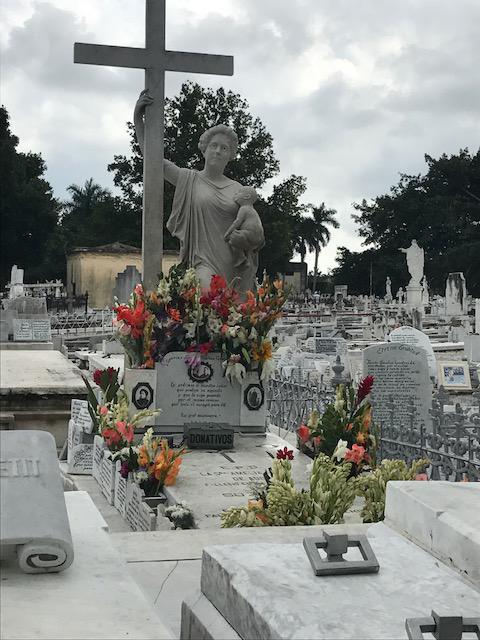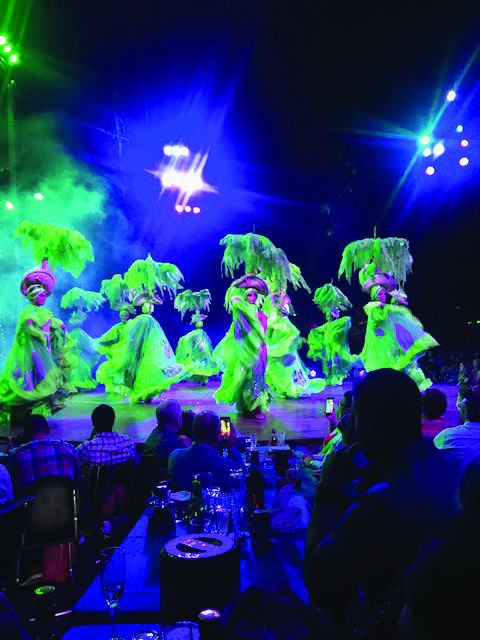Family Experiences Communist Cuba on Cruise
Dr. Kim Baldock thought Christmas in the Caribbean would be a great way to spend the holiday with her parents, Randy and Kay Memmer, and children, Jacob, 18, and Katie, 20. The “gift” of a shared experience could replace traditional gifts.
The family was all in. Now where to go exactly? Randy suggested Cuba, which has recently opened up to Americans who do not have family ties to the island. So, they booked a cruise on the Royal Caribbean’s Empress of the Seas, with destinations in Cuba as well as the Cayman Islands.
Under U.S. law, there are only 12 permitted reasons an Americans can visit the communist nation, including “support for the Cuban people,” “educational activities,” and “public performances.” Their itinerary organized by the cruise line and guided by highly trained Cuban tour guides was designed to meet these criteria. While on the island, Kay noted, the family tried to buy goods and services directly from citizens versus the government.
This was challenging, however, as very few Cubans own their own businesses, chimed in Randy, adding, “There is no incentive to work. The government takes all their earnings.”
“Hopefully they will use the money we spent there to help the people,” added Kim.
Above all, the family wanted to demonstrate to ordinary Cubans what ordinary Americans are like, free from the influence of state propaganda. “They could see that we don’t have horns,” joked Kay.
The family set sail from Miami, Florida, arriving in Havana on Christmas Eve. They later visited the cities of San Fuego and Trinidad. Among the sites they toured were Revolution Square and the old colonial city.
Immediately upon arriving in Cuba, the family began to observe some fundamental differences between life there and the U.S. The city of Havana has some 2 million occupants but “it was completely dark. There were no lights,” Randy said.
“You wouldn’t have known it was Christmas,” added Kay, noting she learned only 30 to 40 percent of Cubans even celebrate the holiday. “Tourists rang the (church) bell and the tour guide said it was the first time she’d ever heard it.”
The highlight of the trip was a visit to Havana’s legendary El Tropicana nightclub for dinner and the cabaret show. In addition to sipping some Cuban rum, they were treated to an elaborate stage show complete with showgirls clad in tiny costumes with soaring headdresses. At one point one of the dancers jumped from a second story balcony into the crowd, said Kay. Although dinner and the show cost $200 a person, “It was definitely worth going to,” said Kay.
Another standout experience was visiting Fusterlandia, the home and neighborhood of visual artist Jose Fuster. In 1975, Fuster began decorating his studio with a mosaic and his project grew, so that today his entire neighborhood is covered in his bright, fantastical artwork. Tourists now flock to the once depressed neighborhood. Randy, sitting on a bench waiting for the rest of his family to finish the tour, had a chance conversation with the artist, although he didn’t realize it until much later.
While the trip was overwhelmingly positive there were some experiences that made the family uncomfortable.
“You always had the feeling that you were being watched,” said Kim.
They also got a taste of censorship. A Facebook post Kay wrote that read, “Looks like the Russians are out and the Chinese are in,” took four days to show up on her social media account while other images and posts appeared almost instantly.
“I was just surprised to see communism as a whole,” said Jacob. The amount of graffiti street art, much of it anti-capitalist or tributes to the Cuban Revolution, stood out to him. One of his favorite pieces was titled “Monster Eating the World,” which appeared on a building in San Fuego.
Those observations and the contrast between life in Cuba and the U.S., said Kim, is exactly why she wanted her children to experience the island firsthand. “Everybody should go and check it out,” she said. “I don’t think as Americans we appreciate our freedoms.”
After all, added Randy, Cubans themselves aren’t free to learn about the world that way. “They have one television station,” he explained, “You don’t know what is happening except what the government wants you to know.”
Still, they saw signs that Cuba is changing. For example, citizens can now access the Internet. But at a cost of $1 an hour it is still prohibitively expensive as most Cubans live on $20 a month, explained Randy.
“It is going to open up,” said Kim,” “I’d like to go back just to see how it changes.”




